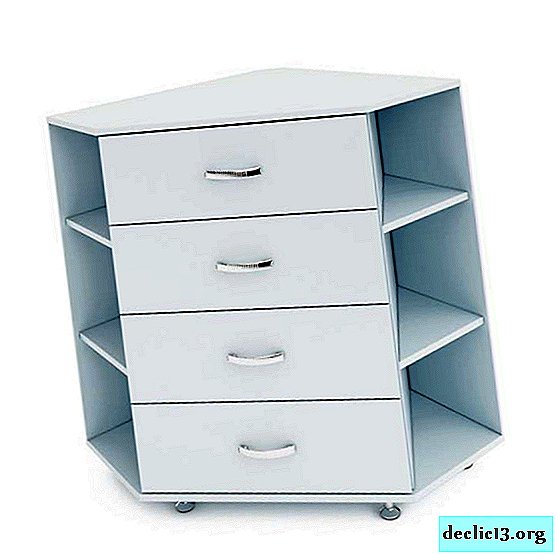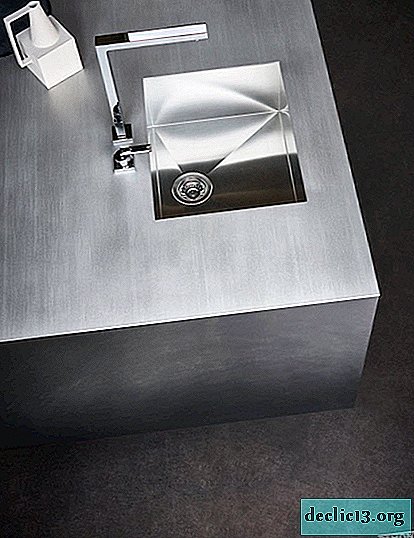Bathroom: Oriental-style Japanese aspect
The construction of a new home, the overhaul of an old one always begins with the visualization of the desired result. Not only the budget for future expenses (which according to the well-known playful formula will still be 2 times higher than the initial calculation) depends on the chosen option, but also psychological comfort, or, as they say, the quality of life, which is much more important than status and prestige (do not argue, this So!).
"I want an interior in oriental style!" - a statement that doesn’t clarify a bit is more confusing, so the clarifying question immediately follows: “What is meant? (not a picture of a dragon in a wall, really ...)”.
The first to divide the world into East and West were Phoenician sailors, then ancient Greece and Rome arrogantly contrasted their states with eastern barbarians. The modern term refers to a vast territory - from North Africa to the Far East. The population in each of the countries located here has a distinctive and interesting culture and special traditions, so the "East" is a geographically extensible concept, and with reference to the interior it will denote such special characteristics as
- space organization
- building and finishing materials,
- color spectrum,
- the number of necessary furnishings their appearance,
- decoration methods.
Oriental style is divided into "Moroccan", "Egyptian", collective "Arabic", "Persian", "Indian", "Chinese", eclectic "Asian". Among all this diversity stands out surprisingly laconic and sophisticated Japanese style. To follow it, it is not at all necessary to purchase everything from "madeinJapan", it is enough to select (and the market in terms of variety of offers is simply inexhaustible!) Elements similar in appearance and texture, harmoniously combined with each other.
The bathroom created in the Japanese style should be ergonomic, i.e. as comfortable as possible for the physical and spiritual state of a person, first contribute to maximum relaxation and peace, and then fill with a powerful charge of energy. In the bathroom there is not just a washing off of dirt, but a whole ritual of purification, which applies to both the body and the soul. In the Japanese version, it can be compared with the performance of a musical work, in which there is an overture, exposition, development, climax and a happy ending. For each stage, a division into target zones is provided:
For changing clothes, wash basins are also placed here.

Shower compartment or cabin (preliminary cleansing with shampoo, soap and washcloth).

Actually a bathtub (ofuro), in which very hot is typed (by the standards of Europeans, water is 40about and more) with flavors and incense (for complete relaxation). To prevent the water from cooling down, a stove heater is used from below and a cover made of rubber or wood from above.

A bathtub of a special rectangular design for cleaning with dry steam (using sawdust, often cedar).

Separate toilet area.

The adjacent area for the tea ceremony (VIP option).

Zones are separated by sliding partitions (shoji), wood or glass panels, transparent oilcloth, raising the floor level (placing sections on the catwalks) or sequential arrangement of individual parts.



For interior decoration in the classic Japanese style, only natural materials are selected - wood, stone, glass, in modern versions - innovative materials, but stylized as natural. Tiles (walls, floors), bamboo (wallpaper, partitions, screens, ceiling), rice paper (partitions), wicker rods (screens, partitions) are widely used. Galvanized metal and acrylic - a tribute to the present day, are mainly used for the manufacture of bathtubs or ceiling structures in stylized interiors.


The central subject of the bath composition is a bath (types of furo, furo, furaco), which is usually taken in a sitting or reclining position (so that hot water does not reach the heart), so the traditional font has a barrel-shaped shape. Previously, a special hardwood tree (hinoku), resistant to moisture, possessing antibacterial properties that prevent the effects of mold, was used for its manufacture. Now this rule is not mandatory, you can use plumbing from the usual materials for Europeans.

Shelves with open facades are used to place bath accessories or decorative elements.

The high level of Japanese technology also touched on such a conservative space as a bathroom, bringing here electric heaters (meeting all standards of operational safety in damp rooms), towel dryers and bath clothes. The shape and color help harmoniously fit into the interior of the device.

The design palette corresponds to the natural one, resembling the colors of the earth, stones, rocks, sand, therefore, it is all shades of brown, beige, sand, milky white, pearl. Mandatory presence of contrasting basic gamut of colors - red or green, which destroy the monotony and form an energetic accent.
Decorating a bathroom in the Japanese style, it should be remembered that its main value is space, elegant simplicity, and the absence of unnecessary details. You can confine yourself to color combinations, the pattern of tiles with vegetable patterns in pastel colors, the use of pebbles, textured tiles. When choosing a sculptural figure or wall panel, it is preferable to dwell on any one option. Mats, rugs and living plants can become an element of decor. The landscape outside the window can turn out to be a wonderful decoration of the interior, and in the absence of a beautiful view, you can use a film with a landscape drawing.



The illumination uses both natural light and electrical equipment with energy-saving light bulbs. Wall sconces or ceiling lamps are used. Spot LED lighting is an element of lighting design and serves to highlight a particular decor item. Plafonds are styled antique - paper lanterns, candles or kerosene lamps.

For the restrained Japanese style, simple geometric shapes are priority - rectangular, less often - oval. It is important to observe the symmetrical arrangement of the component components.

Space, clean air and soft warmth are the necessary components of design that allow you to admire the result of the work done for a long time - the creation of a bathroom in the Japanese style.


















